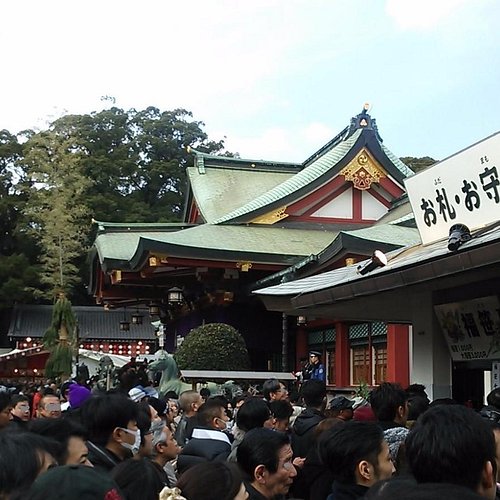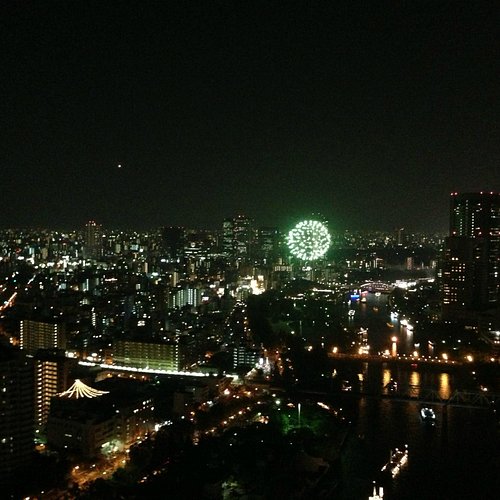The 10 Best Cultural Events in Osaka Prefecture, Kinki
Osaka Prefecture (大阪府, Ōsaka-fu) is a prefecture located in the Kansai region on Honshu, the main island of Japan. The capital is the city of Osaka. It is the center of Osaka-Kobe-Kyoto area. Osaka is one of the two "urban prefectures" (府, fu) of Japan, Kyoto being the other (Tokyo became a "metropolitan prefecture", or to, in 1941).
Restaurants in Osaka Prefecture
1. Toka Ebisu
Overall Ratings
4.5 based on 35 reviews
The first festival of Ebisu, it takes place around January 10th and is intended to pray for prosperity in business. In the case of Imamiya Ebisu Shrine in Osaka it is held on January 9th to 11th, and is famous for the lucky charm known as Fukuzasa. The small charms you attach to the Fukuzasa are also known as kiccho and include koban coins, sea bream, straw rice bags, eboshi (headgear worn by nobles), and mallets. Also drawing big crowds is the "Hoekago Parade," in which geishas and famous entertainers ride in "hoekago" (palanquins) along with the shout of "Hoekago-hoekago, Eraiyatcha-eraiyatcha."
2. Danjiri Matsuri (September)
Overall Ratings
4.5 based on 35 reviews
The festival floats and drum floats used as an offering in festivals are called danjiri in western Japan, and "Danjiri Matsuri" is a collective term for festivals that use them. Particularly famous is the Kishiwada Danjiri Matsuri, in which danjiri, some weighing up to 4 tons, are decorated with carvings, paper lanterns, and banners and vigorously hauled through the streets. It is known as a boisterous festival, but the intensity and flamboyance captivate tourists. In the old days, it was held during the eighth month of the traditional Japanese calendar, but since 2006, it has been held on the Saturday and Sunday before Respect for the Aged Day (the third Monday in September).
3. Sakai Ouo Yoichi
Overall Ratings
4.0 based on 18 reviews
This event is held every year on July 31st in Sakai, Osaka Prefecture at Ohama Park, and it is emblematic of summer. It is said to have originated from a fish market that stood along the Ohama coast when, as part of the Nagoshi Harae purification ceremony, local fishermen would make offerings of fish before the altar while the portable shrine was carried in a procession to Shukuindo Tongu Shrine in Sakai. Though it has been halted by wars and other adverse circumstances, this traditional event dates to the Kamakura period, continuing for more than 700 years. The lively auctions that start at 7:00 PM are popular, and the rows of night shops and company booths are crowded with as many as 200,000 visitors in a typical year.
4. Danjiri Matsuri (October)
Overall Ratings
4.0 based on 6 reviews
Kishiwada Danjiri Matsuri is a lively festival in which participants haul danjiri decorated with carvings, paper lanterns, and banners, some of them weighing up to 4 tons. Its origins go back to 1703 (Genroku 16), when it is said that the feudal lord at the time prayed at Fushimi Inari Shrine in Kyoto for a bountiful harvest. It is generally considered a September festival, but it is also held in October. The difference between the two is the areas in which they are held, with the "September Festival" mainly held in the seaside area of Kishiwada, and the "October Festival" held mainly in mountain-side area.
5. Tenjin Matsuri
Overall Ratings
4.0 based on 40 reviews
This festival is held at Tenmangu shrines all over Japan, and most shrines hold the festival some time around the 25th to coincide with anniversary of the death of Sugawara no Michizane, to whom the they are dedicated. The Tenjin Matsuri at Osaka Tenmangu Shrine is particularly famous, and it is counted among the three great festivals in Japan (the other two are Kyoto's Gion Matsuri and Tokyo's Kanda Matsuri). Though it has been cancelled or postponed due to plagues and wars any number of times, it has been carried on for more than 1,000 years since 951 (the middle of the Heian period), and in modern times it is still held every year on July 24th (festival-eve vigil) and 25th (at the main shrine). The nighttime ritual at the main shrine, called the Festival of Fire and Water is a particular favorite of locals, with a procession of boats decorated with illuminated paper lanterns along the Okawa River (formerly the Yodogawa River) and a dedicatory fireworks display.
6. Sumiyoshi Matsuri
Overall Ratings
4.0 based on 31 reviews
The Sumiyoshi Matsuri, also called "Oharai," is a festival centered around one of the main regular festivals at Sumiyoshi Taisha Shrine which is held on Marine Day in July, and begins with the Mikoshi Arai Shinji ritual, in which the Sumiyoshi Taisha portable shrine is purified with seawater gathered by a boat called a "shiokumibune." Following the Yoiyamisai festival on July 30th and the main regular festival on the 31st, the Nagoshi Harai purification ritual is performed, in which finely dressed women and children pass through a ring of woven grass. After the Oharai ceremony, the general public is allowed to join in passing through the grass ring. On August 1st, finally the spirit enshrined at Sumiyoshi Taisha is carried to Shukuin Tongu Shrine in Sakai in the portable shrine by a procession, which is called "Mikoshi Togyo." In 2005, the custom of making the procession of foot was revived after a period of 45 years.
7. Midosuji Illumination
8. Abeno Tennoji Illuminage
Overall Ratings
3.5 based on 19 reviews
Abeno Tennoji Illuminage is a festival of light first held in 2012 to support reconstruction projects following the Great East Japan Earthquake. Since that time, it is held for three months from November to January with a unique theme every year (for example, in 2015-2016 it is the "Illumination ZOO" to mark the 100th anniversary of Tennoji Zoo). The venue is Tennoji Park, a vast urban park home to Tennoji Zoo and Osaka Municipal Museum of Art, and there are a lot of tourist attractions in the surrounding area.
9. Sakai Matsuri
Overall Ratings
3.5 based on 27 reviews
The Sakai Matsuri began in 1974. It is still held every year in October, and it is Sakai's largest event. The highlight is a parade of 7,000 people on a path down the middle of the street (called the "symbol road"), with an international folk dance parade, a European Renaissance costume parade, a matchlock rifle corps, and floats carrying enormous drums. Visitors can enjoy a variety of events that offer a taste of Sakai's history and traditions, including the Nanban market, with its booths serving food and drink from around the world and exhibitions of local specialties for sale, as well as the large tea ceremonies connected with the tea master Rikyu at Daisen Park and Nanshuji Temple.







